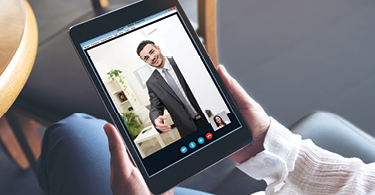5 steps to make working with remote buyers less stressful and more successful
By Gwen Moran
It’s no secret that e-commerce disrupted the world of retail. And while it’s one thing to purchase an outfit or equipment without seeing it first, the phenomenon is also becoming more common among homebuyers. In 2017, 35 percent of buyers bid on a home without seeing it first, according to a February 2018 report by Redfin.
Victoria Murphy, CRS, associate broker with Sotheby’s International Realty, has sold four homes in the Santa Fe region to remote buyers.
“More and more people are buying things online. This is just another area,” she says—especially in regions like hers, which are popular with investors and second-home buyers.
But, of course, there are risks in representing buyers who purchase properties without seeing them first. Here are five steps to successfully handling such transactions.
1. Get a good sense of the non-negotiables
The first step is to have a very thorough understanding of what matters most to the buyer, including their list of non-negotiables. Karin Baldwin, CRS, an associate with RE/MAX 1st Olympic in Lynchburg, Virginia, is currently working with a remote buyer. She spent some time in person with the buyer looking at homes first, which was helpful to get a better sense of her wants.
However, Baldwin says those needs may change during the search process, so it’s important to keep in close communication with the buyer. “At first, they definitely did not want anything with a lot of trees or a big wooded property, but as time went on, that became less important,” she says.
2. Use the power of images
While video is often used to make homes look enticing, REALTORS® working with remote buyers must use video and video chat to show all of the home’s quirks and flaws. Laura Harbison, CRS, broker/owner of Realty Executives Southern Nevada Properties in Henderson, Nevada, uses her phone to record video and uses FaceTime to take buyers on remote tours of the homes they’re considering, both through the interior and also to tour exterior views from the yard.
“With video being as good as it is now, I am finding that more buyers are comfortable with buying sight unseen than ever before,” she says. Harbison says she sells “a few homes each year” this way.
3. Be their other senses
And while video can give buyers a good visual sense of the home, the buyer’s agent needs to fill in the other senses. If a home smells like mildew, pet urine or smoke, for example, you need to call that out, Harbison says.
Murphy says even some visual aspects need to be highlighted. One of the homes she sold remotely had an odd floor plan with a sunken area. Murphy was concerned that the additional steps would be a turn-off for her buyers who were older. They decided the quirky design was fine, but she says it’s worthwhile to make sure there are no unpleasant surprises after closing.
4. Involve an inspector
Murphy stays alert for signs of bigger problems, such as cracks and water stains. If they exist, she immediately points them out to the prospective buyer prior to them making an offer and hiring an inspector.
Although it’s generally recommended that buyers hire a licensed home inspector to verify the condition of the property before closing on it, that step is even more critical when purchasing a property sight unseen. A professional inspector is better able to identify any issues with the home’s systems—especially those that may not be obvious to the agent and which need to be addressed, Harbison says.
5. Get the paperwork in order
Remote buyers need to make arrangements for their closing if they won’t be attending it, especially if they’re overseas. Baldwin’s client will use a power of attorney to allow someone else to handle her closing. But the REALTOR® says it’s important to work ahead—the client will need to make an appointment to have her power of attorney certified at the American embassy.
Harbison has her clients sign an indemnification document, which states that she is not liable for any issues with the property. “Basically, it’s just the buyer acknowledging that they’re buying the property without having seen it themselves, and that the agent isn’t liable if anything was missed. My additional disclosures note that I’m not liable if the inspector misses something either. We’re all human—anybody could miss something,” she says.
Harbison also suggests that buyers invest in a home warranty. For roughly $100 deductible per occurrence, a warranty can provide additional peace of mind in case something unexpected goes wrong, she says.
Helpful Tools
Skype: Skype can be used on mobile devices or a desktop for texting and video conferencing.
FaceTime: Laura Harbison, CRS, broker/owner of Realty Executives Southern Nevada Properties in Henderson, Nevada, takes buyers on virtual tours by live-streaming the house tour to them through this app.
WhatsApp: Karin Baldwin, CRS, a REALTOR® with RE/MAX 1st Olympic in Lynchburg, Virginia, uses this app’s texting and video features to stay in touch with clients and ensure that they see everything she sees.
Take it to the next level with our webinar recording Augmented and Virtual Reality and Real Estate. Search our catalog for “Virtual Reality” to register. It’s FREE for members!








